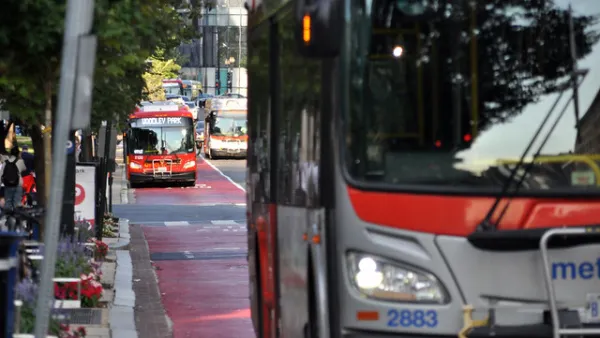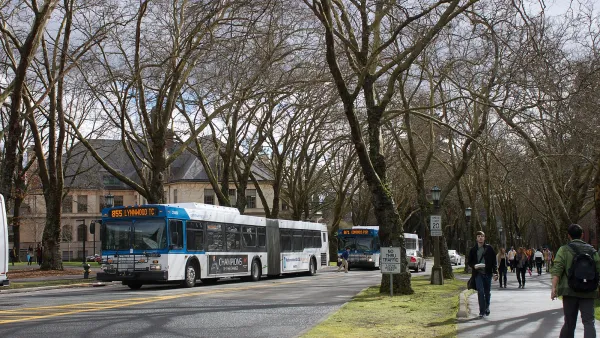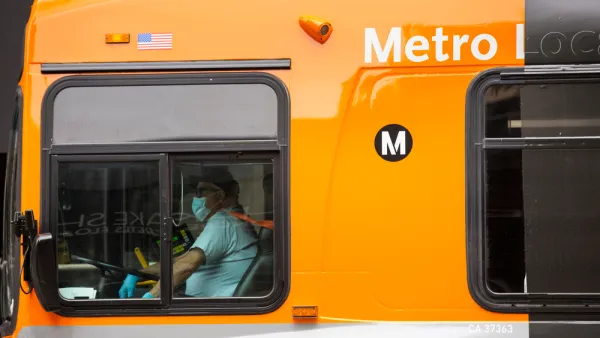As commuter ridership continues to lag due to the pandemic, transit systems are adjusting to better serve the essential workers and transit-dependent households who need them the most.

While transit ridership plunged during the pandemic, millions of workers in industries deemed 'essential' continued to rely on it. Unsurprisingly, writes Aarian Marshall, these jobs skew disproportionately to people of color. "An analysis from the APTA found that white men were more likely to have given up transit during the pandemic; people of color, people who spoke Spanish, and women did not."
As Marshall notes, "Agencies are legally obligated to provide equitable service for everyone in their community." But that hasn't always been the case in practice, with most systems focused on suburban commuters.
As 2020 wore on, transit agencies around the country began making changes to better serve the people who need them most. In Pittsburgh, "officials moved resources away from 'commuter' routes—those serving people who worked traditional office jobs on traditional schedules, who now were mostly at home—and toward lower-income neighborhoods, those with larger shares of people of color and households without cars." The Port Authority also added more service at off-peak hours and on weekends.
Other agencies have taken similar steps to address transportation equity and improve their service in underserved neighborhoods by expanding service, reorganizing routes, reducing or eliminating fares, and investing in PR campaigns to get the word out about service changes.
FULL STORY: Public Transit Systems Refocus on Their Core Riders

Analysis: Cybertruck Fatality Rate Far Exceeds That of Ford Pinto
The Tesla Cybertruck was recalled seven times last year.

National Parks Layoffs Will Cause Communities to Lose Billions
Thousands of essential park workers were laid off this week, just before the busy spring break season.

Retro-silient?: America’s First “Eco-burb,” The Woodlands Turns 50
A master-planned community north of Houston offers lessons on green infrastructure and resilient design, but falls short of its founder’s lofty affordability and walkability goals.

Test News Post 1
This is a summary

Analysis: Cybertruck Fatality Rate Far Exceeds That of Ford Pinto
The Tesla Cybertruck was recalled seven times last year.

Test News Headline 46
Test for the image on the front page.
Urban Design for Planners 1: Software Tools
This six-course series explores essential urban design concepts using open source software and equips planners with the tools they need to participate fully in the urban design process.
Planning for Universal Design
Learn the tools for implementing Universal Design in planning regulations.
EMC Planning Group, Inc.
Planetizen
Planetizen
Mpact (formerly Rail~Volution)
Great Falls Development Authority, Inc.
HUDs Office of Policy Development and Research
NYU Wagner Graduate School of Public Service




























